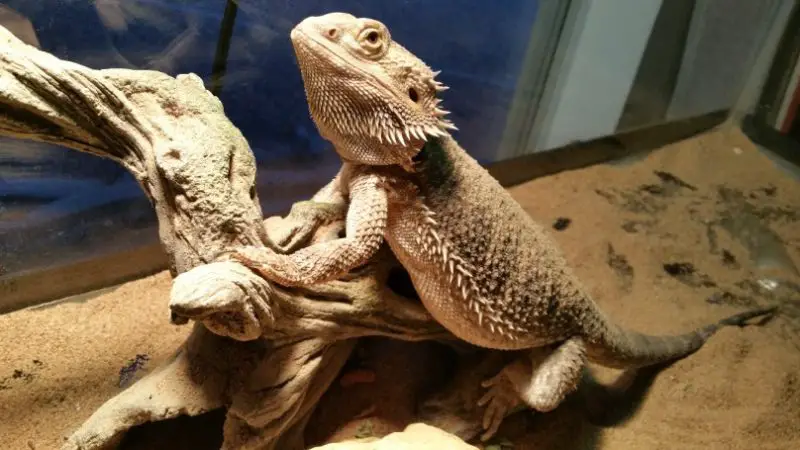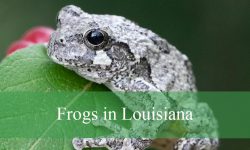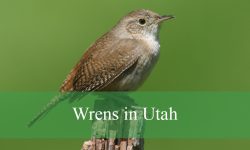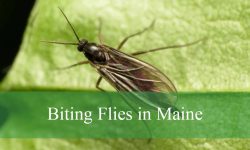Bearded dragons are among the most beloved reptile pets worldwide, known for their docile nature, manageable size, and captivating behaviors. Native to the arid regions of Australia, these reptiles have adapted remarkably well to domestic environments when given proper care. However, understanding their lifespan and the factors influencing it is essential for responsible pet ownership.
In this comprehensive guide, we’ll delve into everything you need to know about bearded dragon lifespan, including the average age they reach, factors impacting their longevity, and expert tips on ensuring they live a long, healthy life.
How Long Do Bearded Dragons Live?

Bearded dragons generally have a lifespan ranging from 8 to 15 years when kept in captivity with the right care. However, not all bearded dragons live this long. Their lifespan is significantly influenced by factors such as diet, habitat, genetics, and overall health care. It’s not uncommon for well-cared-for dragons to live beyond 15 years, although this is relatively rare.
In the wild, however, their lifespan is typically shorter, averaging 4 to 8 years. The primary reasons for this difference include predators, harsh environmental conditions, and food scarcity. In their natural habitat, bearded dragons face numerous challenges that shorten their life expectancy. Understanding these differences helps pet owners appreciate the importance of providing a safe and enriching environment in captivity.
Lifespan in Captivity vs. Wild
-
In Captivity:
When provided with optimal care, including a well-balanced diet, a properly maintained habitat, and regular veterinary check-ups, bearded dragons can live up to 15 years or even longer. Access to veterinary care allows for early detection and treatment of illnesses, contributing to longer life expectancy. Moreover, the absence of predators and environmental threats significantly enhances their chances of living a full life. -
In the Wild:
In contrast, wild bearded dragons face numerous challenges that reduce their lifespan. Predators such as birds of prey, snakes, and large mammals pose a constant threat. Additionally, harsh weather conditions, scarcity of food, and territorial conflicts with other dragons contribute to their shorter life expectancy. Furthermore, wild dragons are more susceptible to diseases and parasites, which can go untreated and lead to premature death.
Factors Affecting Bearded Dragon Lifespan
Several critical factors influence how long a bearded dragon lives. Understanding these elements is key to providing the best possible care and maximizing their longevity. These factors include diet and nutrition, habitat and environment, hydration, and overall health care.
Diet and Nutrition
One of the most significant factors affecting a bearded dragon’s lifespan is its diet. Proper nutrition plays a vital role in maintaining a healthy immune system, strong bones, and overall vitality. Conversely, poor diet choices can lead to obesity, metabolic bone disease, and other health complications that shorten their life.
What Should Bearded Dragons Eat?
Bearded dragons are omnivores, meaning they require a balanced diet of both animal and plant matter. However, their dietary needs change as they grow.
-
Young Bearded Dragons (0-6 months):
At this stage, they are growing rapidly and require a protein-rich diet. About 70% of their diet should consist of insects such as crickets, dubia roaches, and small mealworms. The remaining 30% should be leafy greens and vegetables like collard greens, mustard greens, and squash. Feeding them 2-3 times daily supports their rapid growth. -
Juveniles (6-18 months):
Juvenile dragons continue to grow but at a slower rate. A more balanced diet of 50% insects and 50% vegetables is recommended. It’s essential to provide a variety of insects and leafy greens to ensure they receive all necessary nutrients. -
Adults (18 months and older):
Once fully grown, bearded dragons require less protein and more fiber. Their diet should consist of about 30% insects and 70% vegetables. Feeding them once daily is sufficient, with occasional treats of fruits like berries or apples. However, fruits should make up no more than 10% of their overall diet due to their high sugar content.
Best Foods for Longevity
To promote a long and healthy life, provide the following:
- Insects: Crickets, dubia roaches, and black soldier fly larvae are excellent sources of protein and calcium. Avoid feeding wild-caught insects as they may contain pesticides or parasites.
- Vegetables: Nutrient-dense leafy greens such as collard greens, mustard greens, and dandelion greens are ideal. Squash, bell peppers, and carrots can be added for variety.
- Fruits (occasionally): Blueberries, strawberries, and apples are safe but should be given sparingly due to high sugar content.
- Supplements: Calcium and vitamin D3 supplements are crucial to prevent metabolic bone disease. Dust insects with these supplements 2-3 times a week for juveniles and once a week for adults.
Habitat and Environment
The environment in which a bearded dragon lives directly impacts its lifespan. An inadequate habitat can lead to stress, illness, and a shorter life. In captivity, replicating their natural habitat is crucial for their well-being.
Ideal Habitat Conditions
-
Tank Size:
Bearded dragons require spacious enclosures to move around comfortably. For adults, a minimum of 40 gallons is recommended, but larger tanks (55-120 gallons) provide better space for exercise and exploration. Hatchlings and juveniles can be housed in smaller enclosures, but they quickly outgrow them. -
Lighting:
UVB lighting is essential for vitamin D3 synthesis, which aids in calcium absorption. Without UVB, dragons can develop metabolic bone disease, leading to weak bones and deformities. UVB lights should cover 75% of the enclosure and be replaced every 6-12 months as they lose effectiveness over time. -
Temperature:
Maintaining the correct temperature gradient within the enclosure is vital for digestion and overall health.- Basking Area: 95°F to 110°F. This high temperature aids digestion and prevents impaction.
- Cool Side: 75°F to 85°F. Dragons regulate their body temperature by moving between the warm and cool areas.
- Night Temperature: Should not drop below 65°F to prevent respiratory issues.
-
Humidity:
Bearded dragons are native to arid environments, so the humidity should be maintained between 30% and 40%. High humidity can lead to respiratory infections, while extremely low humidity can cause dehydration and shedding issues. Using a hygrometer helps monitor humidity levels accurately.
Hydration
Proper hydration is crucial for maintaining healthy kidney function and preventing impaction. Bearded dragons get most of their water from food, but they still need access to fresh water daily. Shallow water dishes should be provided and cleaned daily to avoid bacterial growth. Misting vegetables and offering occasional baths can also help with hydration.
In the next sections, we’ll explore more about health care, common diseases, preventive measures, and how to care for aging bearded dragons to maximize their lifespan.
Health and Veterinary Care
Maintaining good health and regular veterinary care are fundamental to ensuring a long and healthy life for bearded dragons. Like all pets, they are susceptible to various illnesses and diseases, many of which can be prevented or effectively managed with proper care. Early detection and intervention play crucial roles in extending their lifespan.
Bearded dragons are masters at hiding illness, a survival instinct that protects them from predators in the wild. This behavior makes it even more important for owners to be vigilant about their pet’s health. Understanding the common health issues and knowing when to seek veterinary attention can significantly improve their quality of life.
Common Health Problems in Bearded Dragons
-
Metabolic Bone Disease (MBD)
Metabolic Bone Disease is one of the most common health issues in bearded dragons. It is primarily caused by a deficiency of calcium or vitamin D3, often due to inadequate UVB lighting or improper diet. MBD weakens the bones, leading to deformities, fractures, and severe pain.- Symptoms: Lethargy, muscle twitching, swollen limbs, soft jawbones, and difficulty walking.
- Prevention: Provide proper UVB lighting, calcium supplements, and a balanced diet rich in calcium and vitamin D3.
- Treatment: Early stages can be managed with dietary adjustments and supplements, but severe cases require veterinary intervention.
-
Respiratory Infections
Respiratory infections are typically caused by poor environmental conditions, such as high humidity or inadequate temperatures. Bacteria and fungi thrive in moist environments, leading to lung infections.- Symptoms: Wheezing, labored breathing, mucus around the nose and mouth, and lethargy.
- Prevention: Maintain proper humidity (30-40%) and temperature gradients within the enclosure.
- Treatment: Respiratory infections require veterinary care, including antibiotics and supportive care such as increased heat to boost the immune system.
-
Parasites
Bearded dragons are prone to both internal and external parasites. Internal parasites, like pinworms and coccidia, can cause digestive issues and weight loss. External parasites, such as mites, can irritate the skin and cause anemia.- Symptoms: Diarrhea, weight loss, lethargy, visible mites on the skin, and excessive scratching.
- Prevention: Maintain proper hygiene by regularly cleaning the enclosure and feeding insects from reputable sources.
- Treatment: Parasite infections require veterinary diagnosis and treatment, including deworming medications or anti-parasitic baths.
-
Impaction
Impaction occurs when a bearded dragon is unable to pass food or substrate through its digestive system, leading to a blockage. This condition is often caused by ingesting loose substrate, feeding oversized insects, or a lack of hydration.- Symptoms: Constipation, swollen abdomen, lethargy, and difficulty moving hind legs.
- Prevention: Avoid loose substrates like sand; instead, use reptile carpet, tile, or paper towels. Feed appropriately sized insects and ensure proper hydration.
- Treatment: Mild impactions can be relieved with warm baths and gentle belly massages. Severe cases require veterinary intervention, possibly including surgery.
-
Mouth Rot (Infectious Stomatitis)
Mouth rot is a bacterial infection of the mouth, often resulting from poor hygiene, mouth injuries, or stress. If left untreated, it can spread to the bloodstream, leading to sepsis.- Symptoms: Swollen gums, pus or mucus in the mouth, loss of appetite, and visible ulcers.
- Prevention: Maintain a clean enclosure, monitor for mouth injuries, and reduce stress by providing a secure habitat.
- Treatment: Requires veterinary care, including cleaning of the affected area and antibiotics.
When to Visit the Vet
Regular veterinary check-ups are essential for monitoring the overall health of your bearded dragon. In addition to annual visits, seek immediate veterinary attention if you observe any of the following symptoms:
- Unusual lethargy or lack of appetite lasting more than a few days.
- Visible weight loss or bloating.
- Difficulty moving, swollen limbs, or deformities.
- Abnormal stool, such as diarrhea or blood in the feces.
- Signs of dehydration, such as sunken eyes or wrinkled skin.
- Labored breathing, wheezing, or mucus around the nose or mouth.
- Mouth ulcers, swollen gums, or discolored tissue inside the mouth.
Preventive Healthcare
Prevention is always better than cure, and there are several steps you can take to minimize health risks and extend your bearded dragon’s lifespan:
- Annual Vet Visits: Regular check-ups help catch potential health issues early, even if your bearded dragon appears healthy.
- Parasite Testing: Stool testing for parasites should be conducted at least once a year.
- Proper Hygiene: Clean the enclosure regularly to prevent bacterial and fungal infections. Replace substrate as needed and disinfect all surfaces, food dishes, and water bowls.
- Quarantine New Additions: If introducing a new bearded dragon, quarantine them for at least 30 days to avoid spreading potential diseases or parasites.
- Hydration and Humidity Control: Proper hydration and maintaining the correct humidity levels prevent respiratory issues and aid digestion.
- Balanced Diet and Supplements: Provide a balanced diet with appropriate supplements to support bone health and immune function.
Common Myths About Bearded Dragon Lifespan
There are several misconceptions about bearded dragon care and lifespan. Dispelling these myths helps owners provide better care and ensure their pets live healthier lives.
Myth: Bearded Dragons Don’t Need UVB Lighting
Fact: UVB lighting is crucial for calcium absorption and bone health. Without it, bearded dragons can develop metabolic bone disease, which can be fatal if untreated. Ensure UVB lights cover at least 75% of the enclosure and replace them every 6-12 months as their effectiveness diminishes over time.
Myth: They Can Eat Any Insects Found Outside
Fact: Wild insects may carry pesticides, parasites, or harmful bacteria that can make bearded dragons sick. It’s safer to provide farm-raised insects from reputable sources. Additionally, some insects found in the wild, such as fireflies, are toxic to bearded dragons.
Myth: They Only Need Insects for Food
Fact: Adult bearded dragons require a diet rich in vegetables for vitamins, minerals, and fiber. A diet too high in protein from insects can lead to obesity, kidney issues, and nutritional imbalances. Their diet should consist of about 70% vegetables and 30% insects once they reach adulthood.
Myth: Bearded Dragons Don’t Need Water
Fact: While bearded dragons get some moisture from their food, they still require access to fresh water daily to prevent dehydration and support kidney function. Misting vegetables or providing occasional baths also help maintain hydration.
Myth: Sand is the Best Substrate
Fact: Loose substrates like sand can cause impaction if ingested. Safer alternatives include reptile carpet, tiles, or paper towels. If using sand, choose calcium-based sand and monitor closely to prevent ingestion.
In the next sections, we’ll provide expert tips on how to extend your bearded dragon’s lifespan, recognize signs of aging, and care for senior dragons to ensure they live comfortably and happily in their golden years.
How to Extend Your Bearded Dragon’s Lifespan
Caring for a bearded dragon goes beyond providing food and shelter. To maximize their lifespan and ensure they live a happy, healthy life, owners must adopt a holistic approach to care. This includes proper nutrition, an ideal environment, mental stimulation, and emotional well-being. Here are expert tips on how to extend your bearded dragon’s lifespan:
Provide a Balanced and Nutritious Diet
Diet plays a vital role in maintaining overall health and preventing disease. Ensure your bearded dragon receives a balanced diet that meets its nutritional needs at each stage of life.
- Variety is Key: Offer a variety of leafy greens, vegetables, and insects to provide a broad spectrum of vitamins and minerals. Rotate between different greens (like collard greens, mustard greens, and dandelion greens) to ensure a balanced intake of nutrients.
- Calcium and Vitamin Supplements: Dust insects with calcium and vitamin D3 supplements to prevent metabolic bone disease. Adult bearded dragons require supplements once a week, while juveniles need them 2-3 times a week.
- Proper Insect Size: Feed appropriately sized insects to prevent impaction. As a rule of thumb, the insect should be no larger than the space between the bearded dragon’s eyes.
- Limit High-Oxalate and High-Phosphorus Foods: Foods like spinach, beet greens, and kale contain oxalates that can bind to calcium, reducing absorption. Feed these sparingly to prevent nutritional imbalances.
Optimize Habitat and Environmental Conditions
Creating a comfortable and stimulating environment is crucial for both the physical and mental health of your bearded dragon.
- Tank Size and Layout: Provide ample space for movement and exploration. A tank size of at least 40 gallons is recommended for adults. Include climbing branches, rocks, and hiding spots to mimic their natural habitat and prevent boredom.
- Lighting and Temperature: Ensure a proper temperature gradient with a basking area (95°F-110°F) and a cooler side (75°F-85°F). Use UVB lights to aid calcium absorption and replace them every 6-12 months.
- Hygiene and Cleanliness: Clean the enclosure regularly to prevent bacterial and fungal growth. Spot-clean daily and perform a thorough cleaning every month, including disinfecting all surfaces and replacing the substrate.
Provide Mental and Physical Stimulation
Mental and physical activities are essential for preventing stress and boredom, which can negatively impact a bearded dragon’s health.
- Enrichment Activities: Include climbing branches, tunnels, and interactive toys to encourage exploration and exercise.
- Handling and Social Interaction: Regular, gentle handling helps your bearded dragon feel secure and reduces stress. Spend time interacting with them outside the enclosure in a safe, supervised area.
- Exploration and Exercise: Allow them to explore a secure, designated area outside the tank to promote physical exercise and stimulate their curiosity.
Monitor Health and Behavior Regularly
Regular monitoring allows for early detection of health issues, increasing the chances of successful treatment.
- Observe Behavior: Keep an eye on activity levels, appetite, bowel movements, and shedding. Any changes in behavior or physical appearance may indicate a health problem.
- Weight Monitoring: Weigh your bearded dragon regularly to track growth and detect any sudden weight loss or gain.
- Skin and Shedding: Healthy bearded dragons shed regularly. Incomplete shedding, especially around the toes and tail, can cause circulation issues and should be addressed by increasing humidity slightly or providing a warm bath.
Recognizing Signs of Aging in Bearded Dragons
As bearded dragons age, they experience physical and behavioral changes just like any other pet. Recognizing these signs helps owners provide the necessary care and adjustments to ensure comfort and quality of life in their senior years.
When Do Bearded Dragons Become Seniors?
Bearded dragons are generally considered seniors at around 6-8 years of age. However, this can vary depending on genetics, health history, and overall care.
Common Signs of Aging
- Reduced Activity Levels: Senior bearded dragons tend to be less active and may bask more frequently as their metabolism slows down.
- Changes in Appetite: A decrease in appetite is common with aging, but a significant loss should be evaluated by a veterinarian.
- Weight Fluctuations: Older dragons may experience weight loss due to muscle atrophy or dental issues, making it difficult to eat harder foods.
- Vision and Mobility Issues: Cataracts or other vision problems can develop with age, affecting their ability to catch live prey. Arthritis may also limit mobility.
- Slower Digestion and Metabolism: Aging dragons have slower digestion, making it essential to provide easily digestible foods and maintain appropriate basking temperatures.
Caring for Aging Bearded Dragons
As bearded dragons age, their care requirements change. Making necessary adjustments ensures they remain comfortable and healthy in their senior years.
Dietary Adjustments
- Easily Digestible Foods: Offer softer foods like finely chopped vegetables and smaller, gut-loaded insects to aid digestion.
- Increased Hydration: Aging dragons are more prone to dehydration. Ensure they have access to fresh water and mist their vegetables to increase moisture intake.
- Nutritional Supplements: Continue providing calcium and vitamin supplements but consult a veterinarian for appropriate dosages as dietary needs change with age.
Environmental Adjustments
- Accessible Habitat Layout: Arrange the enclosure to minimize climbing and jumping, which can be challenging for senior dragons. Create accessible basking areas and hiding spots.
- Consistent Temperature and Humidity: Senior dragons require stable temperatures to aid digestion and maintain body temperature. Ensure the basking area remains at 95°F-100°F and the cooler side at 75°F-85°F.
- Soft Substrate: Consider using softer substrates like reptile carpet to provide cushioning and support for aging joints.
Health Monitoring and Veterinary Care
- Regular Vet Visits: Increase the frequency of veterinary check-ups to monitor for age-related health issues such as arthritis, organ decline, and dental problems.
- Pain Management: If arthritis or other age-related discomfort is present, consult with a reptile veterinarian about safe pain management options.
- Vision and Mobility Support: Assist aging dragons with vision or mobility issues by hand-feeding them or offering pre-killed insects that are easier to catch.
Conclusion: Ensuring a Long and Healthy Life
Bearded dragons are fascinating pets with the potential to live long, healthy lives when given proper care and attention. By understanding their specific needs for diet, environment, mental stimulation, and health care, owners can maximize their lifespan and enhance their quality of life.
The key to longevity is preventive care—providing a balanced diet, maintaining an ideal habitat, monitoring health regularly, and seeking veterinary attention at the first sign of illness. Additionally, offering mental stimulation, social interaction, and emotional well-being contributes to their overall happiness.
Whether you’re a new bearded dragon owner or have cared for these reptiles for years, ongoing education and attentive care are essential. By implementing the guidelines in this article, you’ll not only extend your bearded dragon’s lifespan but also ensure they live a fulfilling and contented life.
Owning a bearded dragon is a rewarding experience filled with curiosity, bonding, and learning. With proper care, your bearded dragon can be a cherished companion for many years to come.






